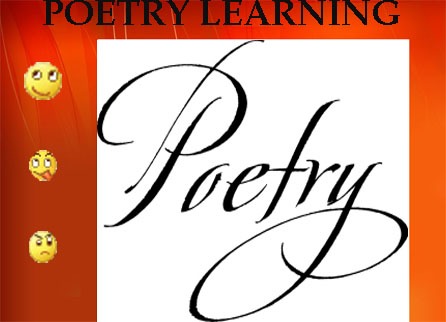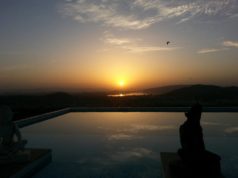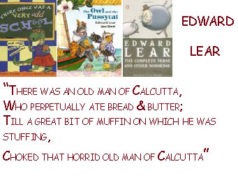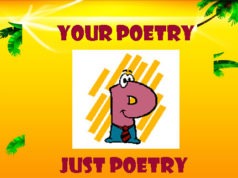Poetry writing is Imaginary, a word play and dreamy thoughts. I write my poems randomly, attempting to rhyme and verse with word play and thereby reading and referring poems of many poets too when I have some time to explore.
When I ever wrote poetry, the first thing that I thought of was ‘Sounds’. We use sounds and words to create effects in poetry. The most common method I guess all follow is Rhyme. If the words at the ends of two or more lines of a poem rhyme, the poem has a rhyme scheme.
I remember “Pied Beauty” in which the poet Gerard Hopkins used a rhyme scheme – words like things, wings – swim, trim.
Glory be to God for dappled things-
for skies of couple-colour as a brinded cow;
For rose-moles all in stipple upon trout that swim;
Fresh fire-coal chestnut falls, finches’ wings;
landscape plotted and pieced – fold, fallow and plough;
And all trades, their gear and tackle and trim.
I think, we need to teach children the basics of rhyming words first and provide them a vocabulary of all words that rhyme. Before embarking on a poem to weave, the kids need to have the Poetry Soup and use the ingredients to stir them well.
However, we notice that Contemporary poetry is varied and flexible which do not conform to fixed rules about rhyme or length as in previous times. With the web explorations of poetry and more people sorting for word play with poems, I suppose more poets have experimented with language and invented new forms. Poetry has become more International and readers enjoy any poem they understand. One thing is sure, Traditional forms of poetry have survived and continue to flourish alongside new forms and many young people enjoy the poetry of pop music lyrics. Me too:-)
Well, here’s the Terms in Poetry and Kinds of Poetry for all interested readers. Enjoy.
TERMS USED IN POETRY
Teachers may use this in Classroom : Copy+Paste+Print for circulating to students (as per Grade levels & their understanding) while teaching ‘How to Write a Poetry
Alliteration : When two or more words begin with same sound | Limerick : a five line form of humorous verse. It is written in a measure which consists of 13 beats and a rhyme scheme of aabba.(Some Limericks Here) |
Alexandrine : A line of verse having 12 syllables. It is the most common metre in french poetry | Metre : Means the pattern of rhythm in a poem |
Assonance : The repetition of vowel sounds with varying consonant sounds. The words mine and night, for eg., have assonance of i sounds. | Monometer : a line that consists of one foot |
Anacrusis : one or more unstressed syllabus at the beginning of a line that do not form part of the regular metre | Octameter : a line of eight feet |
Anapest : refers to three syllable foot in which the greatest stress falls on final syllable | Octave : an eight line stanza. It commonly refers to the first eight lines of an Italian sonnet |
Blank verse : means poetry in unrhymed iambic pentameter | pantameter : a line of five feet |
Ceasura : a pause indicated by a comma, full stop or other punctuation mark | Onomatopoeia : a word whose sound suggests the sound it refers to. For eg. the word buzz suggests as well as refers to the sound made by bees |
Catalexis or truncation : omission of an expected unstressed syllable from the end of a line | Quatrain : a four line stanza or four line poem |
Consonance : occurs when same consonant sound is repeated | Rhyme scheme : means the patterns of rhyme in a stanza or poem |
Couplet : a pair of rhyming lines. Close couplet complete a sentence in two lines.Open couplets continue the sentence from one pair of lines to another. Heroic couplets are in iambic pantameter | Rondel : a 13 or 14 line poem in which the first line A and second line B are repeated near the middle and at the end. The 14 line form rhymes ABba abAB abbaAB |
Dactyl : a three syllable foot in which the first syllable receives the strongest stress | Sestex : is the latest six lines of an Italian sonnet. It also refers to any six line stanza or six line poem |
Dimeter : line of two feet | Tetrameter : a line of four feet |
Double Rhyme : has two rhyming syllables, as in dreary and weary or market and park it | Stanza : is a repeated pattern of lines, usually with a metre and a rhyme scheme |
Elision : combining of two syllables into one, as in ne’er for never | Tercet or triplet : three line poem |
foot : is a metrical unit of two or more syllabus | Tetrameter : line of four feet |
Free verse : Poetry without metre or without rhyme | Trimeter : a line of three feet |
Haiku : A Japanese form consisting of 17 syllables arranged in three lines | Triolet : a complex eight line French form, in which the first line, A, is repeated twice and the second line, B, once. Its rhyme scheme is ABaAabAB |
Heptameter : is a line of seven feet | Trochee : is a two syllable foot in which the first syllable is more stressed than the second |
Hexameter : a line of six feet | Villanelle : an elaborate 18 line French form. It repeats two rhyming lines A and A’, in an intricate pattern AbA’abAabA’abAabA’abAA’ |
lamb : a two syllable foot in which the second syllable has more stress than first | lambic pentameter : consists of a line of five iambs |
Sonnet : a 14 line form with several possible rhyme schemes. The Italian sonnet, also called Petrarchan sonnet, usually rhymes abbaabba cdecde or abbaabba cdcdcd. The English Sonnet or Shakespearean Sonnet, rhymes abab cdcd efef gg | Sonnet Sequence : is a series of sonnets with a similar subject |
Kinds of Poetry: Through the years, poets have developed many kinds of poetry. However, there are three main kinds that I refer here : Lyric, Narrative and Dramatic.
Lyric Poetry: The most common type – the word lyric comes from lyre, a harplike instrument played by ancient Greek Poets during recitals or shorter poems. Today, lyric means any short poem. The haiku, Japanese form, is one of the shortest types of lyric poetry. 17 syllables arranged in 3 lines. The first has 5 syllables, second 7 and third 5. Here is a Haiku of Japanese Poet Issa translated by Australian poet Harold Stewart, two lines of 10 syllables each:
In these degenerate later days, I stare
Astounded cherry blossoms everywhere!
The Ode is a serious, elaborate lyric full of high praise and noble feeling. Many odes mark important public event. Classic ode, also called the Pindaric ode or choral ode, was developed and Ancient Greeks. It consist of three parts. First two parts, the strophe and antistrophe, have same pattern of rhyme. The third part, the epod, has a different pattern. Most odes later developed which consist of stanzas with the same pattern of rhythm and rhyme.
The elegy, a common lyric, is a meditation on life and death. Mourning of friend or famous person. The Sonnet is 14 line lyric with certain pattern of rhyme and rhythm. Many sonnets are love poems . Other lyric forms include the limerick, rondel, triolet and villanelle.
Narrative Poetry : Tells stories. Two main forms are Epics and Ballads.
Epics: These are long poems with most epics describing the deeds of heroes in battle or conflicts between human beings and natural or divine forces. Many epics also tells us of the origin or history of people. The oldest surviving form of poetry, Epics were composed during the 700s B.C.Iliad and the Odyssey were the two most famous epics in Western Literature and scholars have a point of their say as these two works are traditionally attributed to the Greek poet Homer. The Iliad describes events in the last year of the Trojan War, which was fought between Greece and the City of Troy. The Odyssey tells of the adventures of Odysseus, King of Ithaca, on his return home after having fought for Greece in the Trojan War.
Ballads: They tell shorter stories about a particular person. Many Ballads in English Literature describe Robin Hood adventures, a legendary outlaw who stole from the rich people and gave to the poor. Some ballads date back to 1300s.
Dramatic Poetry : Tells stories like narrative poems. But in dramatic poetry, the poet lets one or more of the story’s characters act out the story. Many plays are written as dramatic poetry. If the dialogue of a play rhymes, has repeating rhythms, or features about distinct poetic elements, the play is considered to be dramatic poetry. William Shakespeare, the English playwright is famous for being a dramatic poet. Robert Browning wrote many poems in dramatic monologue, in which the story is told in the words of only one character.
( For more on Elements of poetry, please come back soon as I have yet to work on this)
LIMERICK : A form of humorous verse. It takes it’s name from the city of Limerick, Ireland. No one knows how or where the form originated. It became known after Edward Lear made the form popular with his first “A Book of Nonsense (1846). The Limerick is a poem of five lines, with strong beat and rough anapaestic rhythm (i.e. de-de-DUMM). It is written in Poulter’s measure, a Folk Metre that consists of 13 beats. The first two lines rhyme with the fifth, the third line rhymes with the fourth.








